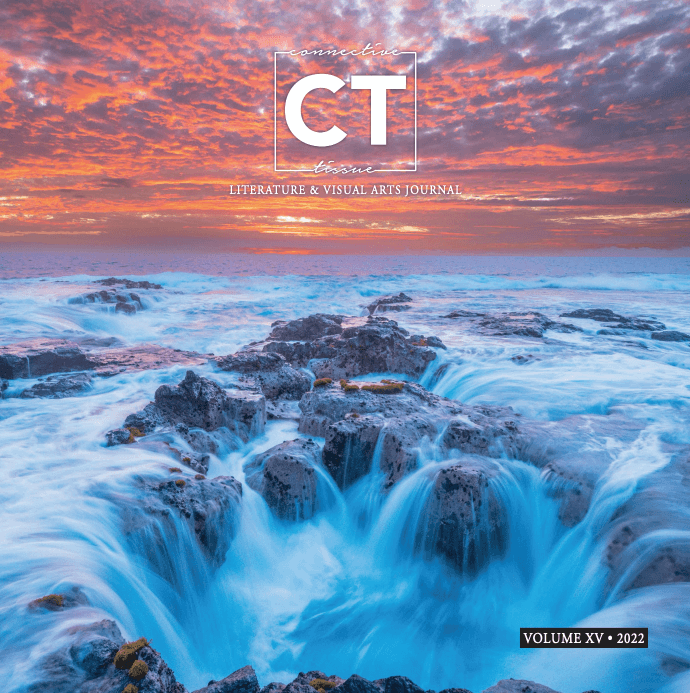Connective Tissue, UT Health San Antonio’s student-run literature and arts journal, published its 2022 issue on May 18. The journal has showcased the artistic talents of students, staff and faculty for 14 years, and serves as a much-needed creative outlet for students and providers to process their unique, often difficult experiences in health care.
The journal is published by the Center for Medical Humanities and Ethics, and made its debut in 2008. It serves as a platform for creative works from students, faculty and staff, including works of prose, poetry, essays and memoirs, as well as paintings, photography and illustrations.
“Our contributors all come from the San Antonio health care community in some way, and there’s a unique lens that they bring their voices to,” said Chelsea Wu, a fourth-year medical student and a co-editor in chief for Connective Tissue.
Wu was an English major before deciding to pursue medicine, and her background in literature led her to get involved with the journal. She believes that Connective Tissue plays a vital role for students and employees in the health care community.
“A lot of medical students are artists, they draw, paint or write, and the journal is a good outlet to help them maintain that and for people to explore that side of themselves,” Wu said, adding that the journal also provides a way to process the emotionally difficult aspects of being in medicine.
“A lot of times you have to have really difficult conversations, or you see patients die, so it’s a way to decompress and reflect on your experiences with a larger community, to bring it to the world and, in some ways, make peace with the situation,” Wu said.
Rachel Pearson, MD, PhD, clinical assistant professor in the Department of Pediatrics and the Center for Medical Humanities and Ethics, is one of the faculty advisors for Connective Tissue. Writing was Dr. Pearson’s first profession, having worked for her hometown newspaper for 15 years. She continues to write pieces for outlets like the Washington Post, the New Yorker and more. Though she ultimately chose a career in medicine, she believes that having a creative life is not only compatible with a professional life in health care, but a crucial part of it.
“Creating something can be a way of processing an intense emotional experience,” Dr. Pearson said. “Often it’s hard to relate what you see in the hospital or clinic to the rest of your life. You feel like you want to protect your loved ones from the trauma that you see. Expressing the experience through writing or art can provide a way to articulate that experience. And having those stories heard can be a healing thing in itself.”
Dr. Pearson also doted on the incredible work of Connective Tissue’s student staff and the immense creative talent within the UT Health San Antonio community.
“Once you make a space for creative work, you realize there are students and employees out there who are brilliant painters, photographers or poets, and it just goes to show that you never know what’s underneath that white coat,” she said.
Complimentary copies of the current issue are available in the Center for Medical Humanities and Ethics, located on the 4th floor of the Briscoe Library, room 4.042.
Connective Tissue is currently accepting submissions for the 2023 issue. For submission guidelines, and to view issues online, please click here.


